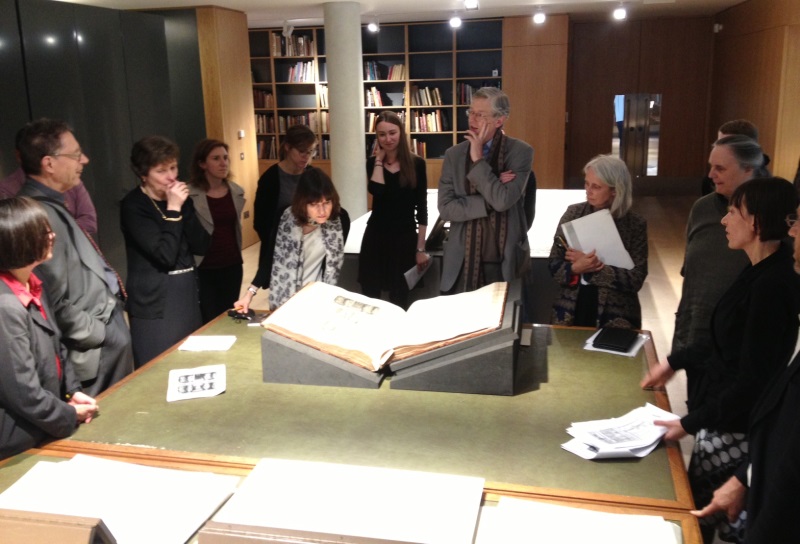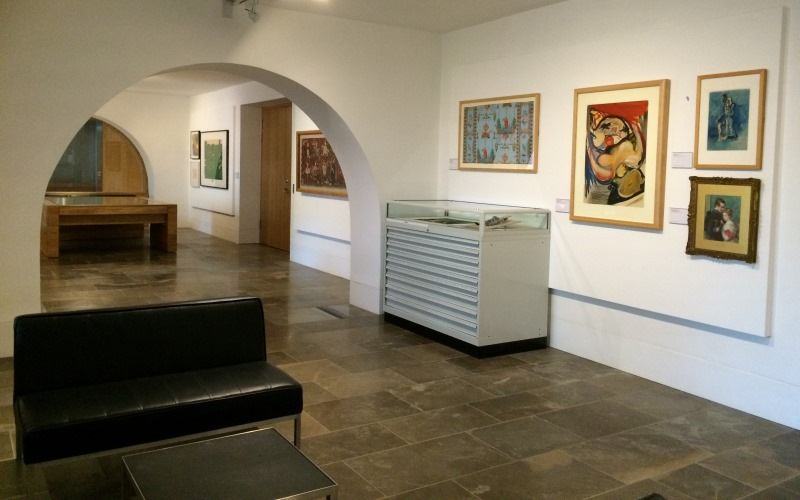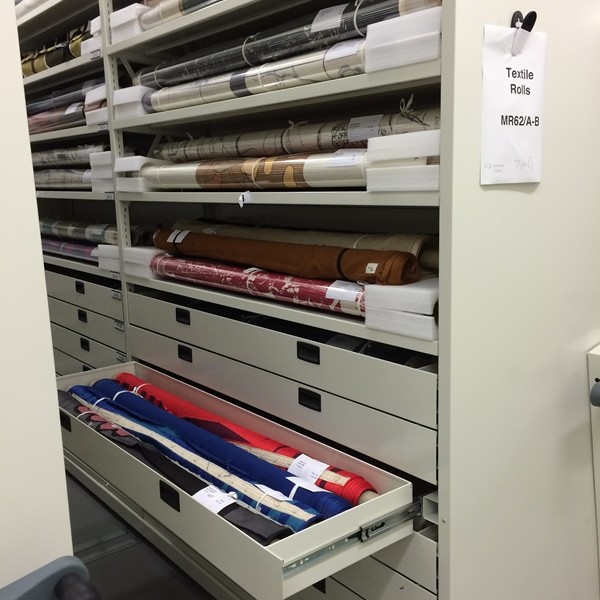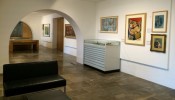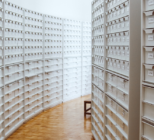With the Whitworth’s collections at the heart of everything we do, and a brief to the design team to increase access to the gallery’s collections, the importance of a centrally located and well-functioning collections store became evident.
The Whitworth redevelopment provided a unique opportunity to work with the wider team on designing new stores and a loading bay. At an early stage in the design process, our architects MUMA, asked us to explain the use of each space within the existing building via colour-coded plans. In terms of the stores, it revealed 11 separate rooms across 3 floors, with complex transit routes, poor physical access, and different standards of environmental control; it made us wonder how we had managed to work up until now! MUMA were able to step back objectively and reimagine how a combination of new build and reconfigured use of existing spaces could be used to benefit both collections and people. We now have three storage areas, all on the same level, easily accessible and more environmentally sustainable.
Our approach to sustainability, which has seen us do away entirely with air-conditioning, relies on broader environmental parameters with both exhibition galleries and stores controlled by natural ventilation and conservation heating. Our location within a park has enabled us to install a ground source heat pump and earth tubes, whilst newly insulated roofs and the thermal mass of the new building – essentially making rooms within rooms – all respond to our passive environmental policy.
We also tackled the storage of our varied collections by working holistically across storage methods – so for example, boxed items, irrespective of whether they are solander boxes containing mounted watercolours, boxed wallpaper pattern books or containers holding textile samples, are all stored together on mobile racking. Using modular systems we have become more cost effective, more efficient in our use of space, and by acting together formed better working relationships with colleagues across our teams. With a budget of £200,000, we worked closely with our storage supplier, Rackline, to devise simple and flexible storage systems that provide basic initial storage for our current collections, but which can also be added to and improved in the future as funding becomes available.
An essential element to the success of the overall design has been in interrogating critical adjacencies, that is the location of stores in relation to study spaces, transit routes, loading bay and goods lift, and galleries; this has transformed the way we work. Previously, there was no suitable loading area or goods lift – all deliveries were made through the front entrance alongside visitors and via our reception area and café, and all artworks, carried manually up stairs to galleries and study rooms. We now have a loading area at the side of the building with dedicated art handling routes to the stores and study facilities at lower ground floor level or via a 4-tonne capacity lift to two levels of exhibition galleries. In addition, large, high-level windows open directly from the loading area into our exhibition galleries for objects too large to go via the normal route. Adjacent to the loading area, and as part of the architect’s rationalization, are technician’s workshops, conservation studio, transit room and quarantine room.
Our main stores are also now sited next to a suite of collections access facilities comprising our Study Centre, Collections Centre and Learning Studio, all located at lower ground floor level around, and looking onto, an Art Garden – these spaces are regarded as the prime routes into the collections for all our audiences, and where staff from our curatorial, learning, and collection care teams work together to facilitate access through study and display.
Our new Study Centre combines the facilities of our old textile and wallpaper study rooms and print room; it retains the feel and purpose of a traditional research room, where scholars and visitors alike can gain close access to all items from the Whitworth 55,000+ collections by appointment with a curator. However, while our old study rooms were behind the scenes and only accessible up several flights of stairs, the activity within the new Study Centre is clearly visible from the park, and a lovely space in which to engage with the gallery’s collections. It is then just a small step across the Art Garden for those who having been inspired, can get creative in the relaxed environment of the Clore Learning Studio. This space supplements the learning & engagement team’s use of the main gallery spaces and is dedicated to messy activities with water, paint and clay.
Placed across the whole length of the back of the building at lower ground floor level, and lying between the Study Centre and the Learning Studio is the newly created Collections Centre. This is immediately visible as visitors enter the gallery from Whitworth Park, and an accessible and comfortable space for individuals and groups to view and engage with changing selections from the collection. Displays are co-selected and produced with a wide range of external partners and collaborators, including teachers and school students; community interest groups; artists and writers; and university researchers and students. Volunteer Collection Access Assistants are also available to help visitors find out more about the selections of works on display and to explain how they can move beyond engagement via exhibitions and the more informal participation within the Collections Centre, to make use of the Study Centre facilities and gain even more in-depth experience of the Whitworth’s collection.
In conclusion, the location and functionality of our stores, has had a direct impact on the suite of collections access, learning, and display spaces adjacent to them and also on the way in which staff are able to access and interact with the collections.


